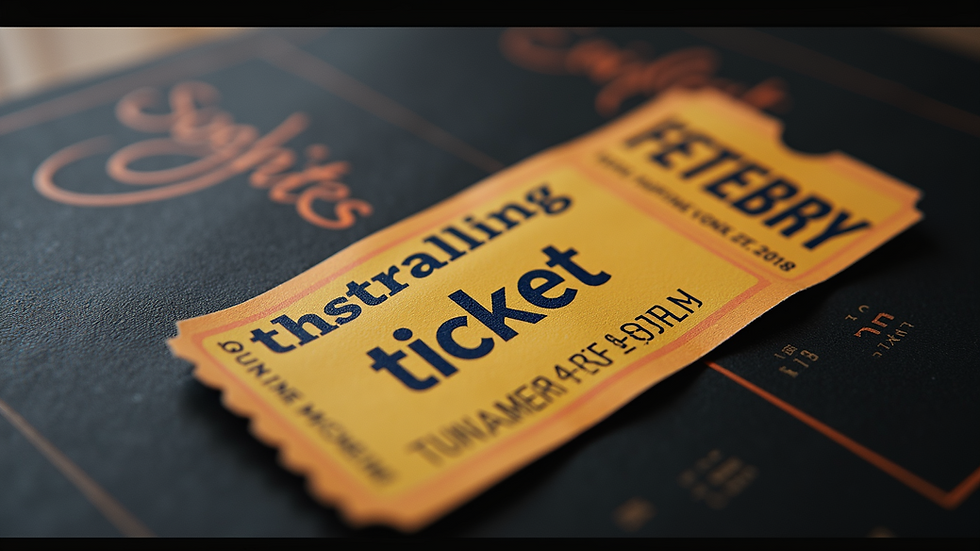- Vrinda Sharma

- Oct 13
- 4 min read
When it comes to bringing your ideas to life, choosing the right printing solution is crucial. Whether you are creating marketing materials, personal projects, or business essentials, the quality and type of printing can make a significant difference. This guide will walk you through the top professional printing options available today, helping you make informed decisions that suit your specific needs.
Understanding the Printing Solutions Guide
Printing technology has evolved tremendously, offering a variety of options tailored to different purposes. From digital to offset printing, each method has its strengths and ideal use cases. Understanding these options will help you select the best solution for your project.
Digital Printing
Digital printing is perfect for short runs and projects that require quick turnaround times. It uses digital files to print directly onto the material, eliminating the need for printing plates. This method is cost-effective for small quantities and allows for easy customization.
Examples of digital printing uses:
Business cards with variable data
Flyers and brochures for events
Personalized invitations
Digital printing also supports a wide range of materials, including paper, cardstock, and even some fabrics. The colors are vibrant, and the detail is sharp, making it a versatile choice for many projects.

Offset Printing
Offset printing is the traditional method used for high-volume print jobs. It involves transferring ink from a plate to a rubber blanket, then onto the printing surface. This process is ideal for large quantities because it offers consistent quality and lower cost per unit as volume increases.
When to choose offset printing:
Large batch printing of magazines or catalogs
High-quality posters and flyers
Packaging materials requiring precise color matching
Offset printing delivers excellent color accuracy and sharp images, making it a favorite for professional-grade print materials.

Specialty Printing Techniques
Beyond digital and offset, there are specialty printing techniques that add unique effects and textures to your projects. These methods can elevate your printed materials and make them stand out.
Embossing and Debossing
Embossing raises the design on the paper surface, while debossing presses it down. Both techniques add a tactile dimension to business cards, invitations, and packaging, creating a luxurious feel.
Foil Stamping
Foil stamping applies metallic or pigmented foil to the surface using heat and pressure. This technique is popular for adding shiny gold, silver, or colored accents to printed materials.
Spot UV Coating
Spot UV coating highlights specific areas of a print with a glossy finish, contrasting with the matte background. It is often used on business cards and brochures to draw attention to logos or images.
These specialty techniques are best combined with offset printing for optimal results.

Choosing the Right Paper and Finishes
The choice of paper and finishing touches can dramatically affect the look and feel of your printed materials. Here are some common options to consider:
Matte finish: Non-reflective, smooth surface ideal for a sophisticated look.
Glossy finish: Shiny and vibrant, perfect for photos and colorful designs.
Recycled paper: Eco-friendly option that supports sustainability.
Textured paper: Adds a tactile element, such as linen or felt finishes.
Selecting the right paper weight is also important. Heavier paper stocks convey quality and durability, while lighter stocks are more economical for bulk printing.
How to Work with a Printing Service
Partnering with a professional printing service can simplify the process and ensure high-quality results. Here are some tips for working effectively with your printer:
Prepare your files correctly: Use the recommended file formats (usually PDF), with proper bleed and resolution settings.
Request proofs: Always ask for a physical or digital proof before the full print run to catch any errors.
Communicate your needs: Be clear about quantities, deadlines, and any special requirements.
Ask about turnaround times: Some printing methods take longer than others, so plan accordingly.
For those seeking reliable and expert assistance, professional printing services offer a range of solutions tailored to your project’s needs.
Maximizing Your Printing Investment
To get the most value from your printing budget, consider these actionable recommendations:
Order in bulk: Larger print runs reduce the cost per unit, especially with offset printing.
Use templates: Many printers provide templates to ensure your design fits perfectly.
Plan ahead: Avoid rush fees by scheduling your print jobs in advance.
Combine printing methods: Use digital printing for personalized elements and offset for bulk components.
By following these strategies, you can achieve professional results without overspending.
Exploring Innovative Printing Technologies
The printing industry continues to innovate, offering new technologies that expand creative possibilities. Some of the latest trends include:
3D printing: Creating three-dimensional objects layer by layer, useful for prototypes and custom products.
Eco-friendly inks: Soy-based and vegetable inks reduce environmental impact.
Large format printing: Ideal for banners, signs, and vehicle wraps with vibrant, durable prints.
Staying informed about these advancements can help you choose cutting-edge solutions that meet your evolving needs.
Choosing the right printing solution is essential for producing high-quality, impactful materials. Whether you need quick digital prints, large offset runs, or specialty finishes, understanding your options empowers you to make the best choice. By partnering with a trusted printing service and following best practices, you can bring your vision to life with confidence and style.











